
Nettop and Mini-ITX Buyer’s Guide
Most of our Buyer's Guides focus on full desktop builds, but what about something a little smaller? Perhaps you're looking for an inexpensive yet sufficiently powerful system to function as an HTPC, or maybe you want a low power device so you can cut down a bit on power bills. Whatever the reason, if you're interested in building a mini-ITX system or a nettop we've got several takes on the concept to discuss.

Read More ...
The Motorola Xoom Giveaway, Round 3
When we reviewed Motorola's Xoom, all that was available was the $799 3G version. Since then Motorola has released a more affordable $599 WiFi only edition with 32GB of NAND on board. Inside the Xoom, as you're all familiar with is NVIDIA's Tegra 2 SoC. Tegra 2 was Google's reference SoC for the Honeycomb release of Android, and thus it's been the heart and soul of all recently announced Honeycomb tablets.
NVIDIA, eager to parade its success with Tegra 2, shipped me a box containing four WiFi Motorola Xooms to give away to our most loyal readers. We're still trying to contact the winner of the first Xoom (AyashiKaibutsu). The second Xoom goes to AnandTech reader jrtroo, respond to my email to claim your prize! Remember you have seven days to claim your prize otherwise you forfeit it. Also remember that the contest is only available to legal residents of the United States (excluding Puerto Rico). Be sure to read the eligibility section to make sure you aren't disqualified if you win!
Here's a shot of the remaining two:
We'll be giving one away every two days until we're out of WiFi Xooms. Sound like a plan?
Read on for instructions on how to win!
Read More ...
HP's New Workstations, Plus More DreamColor Offerings
When HP invited me to attend a press reception for their new mobile workstations, I was understandably confused. I'd just been out to San Francisco to see the new mobile workstations a little over a month before, what could possibly be so new that it needed to go under NDA? As it turns out, HP was saving the best for last.
We had the opportunity to review the HP EliteBook 8740w last year, complete with DreamColor IPS display, and it was...well, a monster. It's expensive, but it's the most powerful workstation-class notebook with the best quality screen you're ever going to find in a portable. The refresh of the 8740w, indeed the entire EliteBook w-series line, only amps up HP's game that much more. This entire line enjoys a gunmetal finish, strengthened glass touchpad, and ISV-certified graphics, and they've all been updated with Sandy Bridge processors, the latest mobile graphics from AMD and NVIDIA, and USB 3.0 connectivity. They're all expected to be available in May.
Starting small and working our way up, there's the EliteBook 8460w. HP offers this notebook with dual-core Intel i5 and i7 processors, up to 16GB of DDR3, and 14" matte screen resolutions at either 1366x768 or 1600x900. The 8460w also comes standard with the AMD FirePro M3900 with 1GB of GDDR3 and supports EyeFinity with up to four screens. MSRP starts at $1,299.

Finally, the big daddy: the EliteBook 8760w. The largest refresh of the EliteBook line also sees the least change. Users will be disappointed to know that while DreamColor is still available, the 8760w loses the 1920x1200 resolution of its predecessor in favor of the more common 1920x1080. That said, there are improvements: the 8760w supports all of Intel's new mobile i7 chips, allows for up to three internal hard drives (two bays plus the optical drive bay can be converted) in RAID 0, 1, or 5 configurations, and offers the fastest mobile workstation graphics on the market. It starts with an AMD FirePro M5950 with 1GB of GDDR5, but can be upgraded to an NVIDIA Quadro 3000M with 2GB of GDDR5, NVIDIA Quadro 4000M with 2GB of GDDR5, or an NVIDIA Quadro 5010M with an incredible 4GB of GDDR5. MSRP starts at $1,899.
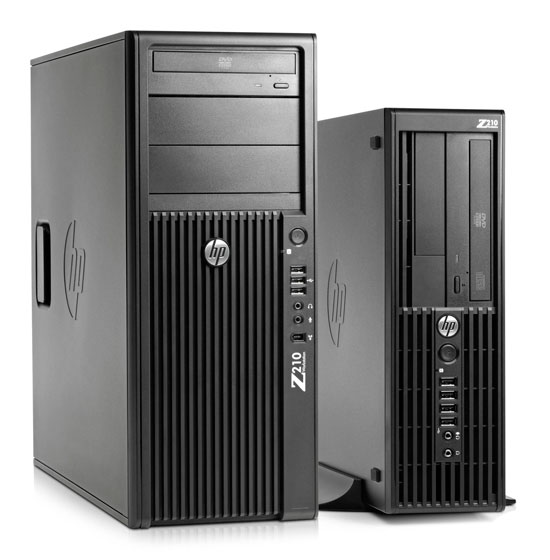
Read More ...
Toshiba's New Mobile Enterprise Line: The Portege R830 Sets the Standard
To say the Toshiba Portege R700 was well-received by the industry would apparently be an understatement; Toshiba brought a level of engineering acumen to bear on that machine heretofore unseen on their notebooks, and the success of the R700 and its descendants is now informing Toshiba's entire mobile business line.
Toshiba's older mobile business notebooks under their Tecra line weren't bad, but stylistically were well behind the times. Made chiefly of ABS plastic, these notebooks unfortunately didn't look like much of an improvement over, say, an HP G-series notebook, and they inherited some of the same problems that plagued Toshiba's consumer notebooks. The older Tecras are big and bulky, but since the success of the R700, Toshiba has taken the hint and completely rearchitected their 14" and 15.6" Tecra notebooks while updating the Portege. The result is the R800 series, split between the 14" Tecra R840, 15.6" Tecra R850, and 13.3" Portege R830.

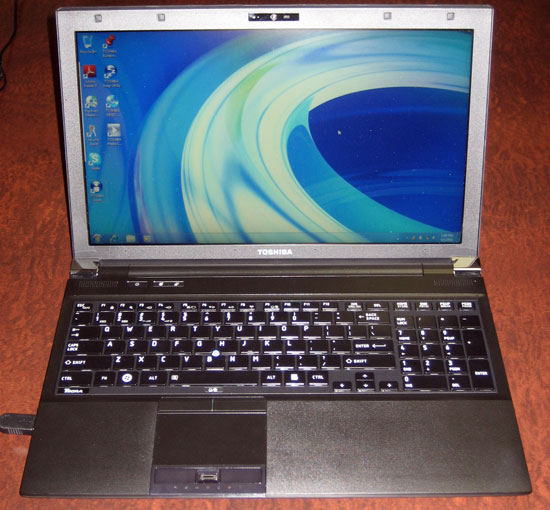
I had the opportunity to see these new notebooks when I met with Toshiba representatives in person and they're a major step forward from older designs. These are sleek, clean, and smart designs. My chief concern is that Toshiba is releasing these notebooks into a market where they have to compete with the new designs by HP which are, frankly, stunning in person. My other complaint is a milder one, but nonetheless relevant: while the chiclet keyboard Toshiba has moved to with these new notebooks is a step in the right direction, the smooth, slightly-glossy finish on the keys isn't the best or most comfortable to use. It's true that traditional plastics may be more liable to wear out over time, but they're more comfortable in the interim. Still, competing workstation-class notebooks from Dell or HP are generally more expensive, and Toshiba is offering a great value in these notebooks. If anything, we just wish some of these innovations would trickle down into the consumer space.
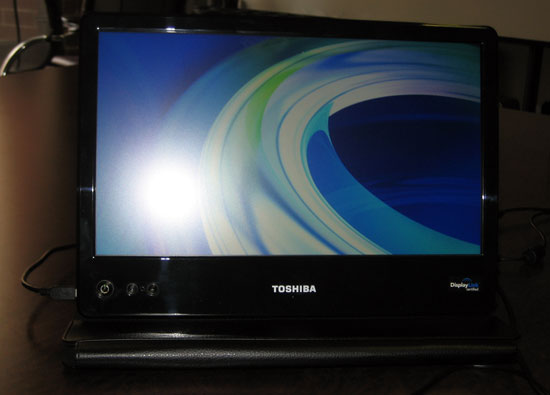
Read More ...
AMD's Radeon HD 6450: UVD3 Meets The HTPC
AMD’s Northern Islands family is composed of four GPUs, roughly divided into two categories. At the top is the 6900 series powered by Cayman, AMD’s first VLIW4 GPU. Below Cayman are three more GPUs, all derived from the VLIW5 Evergreen generation (5000 series). The first of these GPUs was Barts, which is the basis of the 6800 series that launched back in October of 2010. However up until now we haven’t seen the other two mystery GPUs in the retail market. Today that starts to change.
The final two Northern Island GPUs are Caicos and Turks. They have been available in the OEM market for both desktop and mobile products since the beginning of the year, but as is often common with low-end/high-volume GPUs, a retail presence comes last instead of first. AMD is finally giving Caicos its first retail presence today; it will be powering the new Radeon HD 6450. Packing all the upgrades we saw with Barts last year, it will effectively be replacing the Radeon HD 5450. But how well does AMD’s latest stand up in the crowded low-end market? Let’s find out.

Read More ...
Seagate GoFlex Slim 320GB: The World's Thinnest External HDD
As a desktop user I never really jumped on the external storage craze. I kept a couple of terabyte drives in RAID-0 inside my chassis and there's always the multi-TB array in the lab in case I needed more storage. External drives were always neat to look at, but I never really needed any. My notebook's internal storage was always enough.
With the arrival of Sandy Bridge in notebooks however I've given the notebook as a desktop replacement thing a try. I've got enough random hardware if I need a fast gaming machine in a pinch, but for everything else I'm strictly notebook these days. As a result I've come to realize just how precious portable storage is. Most reasonably portable notebooks have one usable 2.5" bay at most (two if you don't mind sacrificing an optical drive). Network storage is great but what if you need something portable on the go with you?
I'm obviously a staunch advocate of spending your internal real estate on an SSD, but if you need the space you've gotta go mechanical for your external storage. If portability is what matters, an external 2.5" hard drive can be quite attractive as they're lightweight and can be powered over USB.
In the 2.5" world there are three predominant thicknesses available: 7mm, 9.5mm and 12.5mm. Most notebook drives are 9.5mm. You'll notice that Intel even ships many of its SSDs with a removable spacer to make them 9.5mm tall in order to maintain physical compatibility with as many notebooks as possible.
Thicker drives are needed to accommodate more platters inside, but as platter densities increase so do the capacities of thinner drives. A couple of years ago Seagate announced the world's first 7mm thick 2.5" hard drive and earlier today, it announced the thinnest external 2.5" drive: the GoFlex Slim.
Read More ...
AMD's Radeon HD 6790: Coming Up Short At $150
The last couple of weeks after the recent GeForce GTX 550 Ti launch have been more eventful than I had initially been expecting. As you may recall the GTX 550 Ti launched at $150, a price tag too high for its sub-6850 performance. I’m not sure in what order things happened – whether it was a price change or a competitive card that came first – but GTX 550 Ti prices have finally come down for some of the cards. The average price of the cheaper cards is now around $130, a more fitting price given the card’s performance.
The timing for this leads into today’s launch. AMD is launching a new card, the Radeon HD 6790, at that same $150 price point. Based on the same Barts GPU that powers the Radeon HD 6800 series, this is AMD’s customary 3rd tier product that we’ve come to expect after the 4830 and 5830. As we’ll see NVIDIA had good reason to drop the price on the GTX 550 if they didn’t already, but at the same time AMD must still deal with the rest of the competition: NVIDIA’s GTX 460 lineup, and of course AMD itself. So just how well does the 6790 stack up in the crowded $150 price segment? Let’s find out.
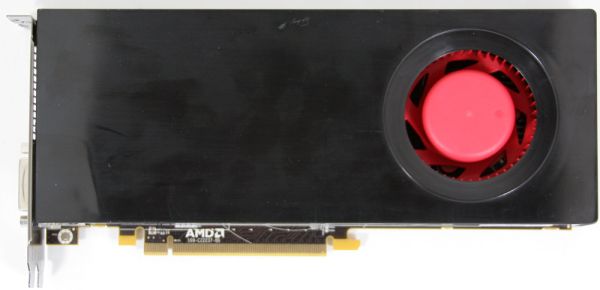
Read More ...
Origin's Genesis: Flagship Bling
Now that we've been getting a fairly steady influx of desktop machines from boutiques, Origin PC is stepping into the ring by sending us their go-to flagship model, the Genesis. Origin is a boutique founded by former Alienware executives, and is relatively young compared to some of the other companies we've reviewed towers from. The Genesis is almost more of a brand than a flagship, but Origin is opting to put one of their best feet forward by sending us a configuration they're sure will do them proud against the competition.
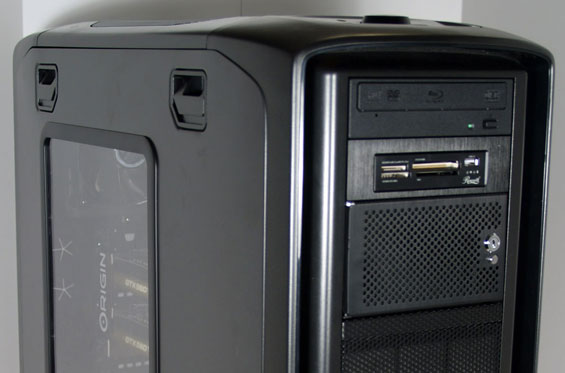
Read More ...
4/22/2011 Daily Hardware Reviews
DailyTech's roundup of hardware reviews from around the web for Friday
Read More ...
Lasers May Replace Spark Plugs in Combustion Engines
Doctor Evil approves this development
Read More ...
Fukushima I Plant Retired, TEPCO Exec. to Step Down Due to Negligence
TEPCO President vows to step down for endangering public by failing to waterproof plant's backup generators
Read More ...
Apple Cloud Music Platform Launch Imminent
Apple music locker set to launch before Google's cloud system
Read More ...
As Promised, Samsung Fires Back at Apple With Its Own Lawsuit
Samsung files lawsuits in three countries, citing 10 patent violations
Read More ...
Fusion Powers AMD to Profit, Strong Earnings
Once troubled chipmaker appears to be turning the corner thanks to GPUs and CPU/GPU "Fusion" combos
Read More ...
New Polymeric Car Paint Can Self-Heal Major Scratches, Dings
New coating is ready for commercial applications
Read More ...
UPDATED: U.S. Police Begin Warrantless Phone Data Grabs, ACLU Fights Back
Cops in Mich., Wisc., and Calif. can inspect ANYTHING on your cell phone -- pictures, call history, and more
Read More ...
PRC Ruling Says USPS Discriminated Against GameFly, Favored Netflix Disc Mailers
A two-year battle ends in GameFly's favor
Read More ...
Amazon Kindle Library Lending to Roll Out This Year
Get free books for a limited time from your local library
Read More ...
4/21/2011 Daily Hardware Reviews
DailyTech's roundup of hardware reviews from around the web for Thursday
Read More ...
Hyundai's "Prius Fighter" Gets Green Light, Veloster to be Priced Below Honda CR-Z
Hyundai pushes further towards its 50 mpg fleet average goal
Read More ...
Apple is Tracking iPhone, iPad Users' Location; Easily Mapped With OS X App
Apple users -- big brother Jobs is watching you
Read More ...
EU Launches Investigation Into ISPs' Internet Throttling
Net neutrality debate continues
Read More ...
Available Tags:Motorola , Xoom , Radeon , Seagate , HDD , Hardware , Apple , Samsung , Fusion , AMD , Amazon , Kindle , iPad ,



No comments:
Post a Comment